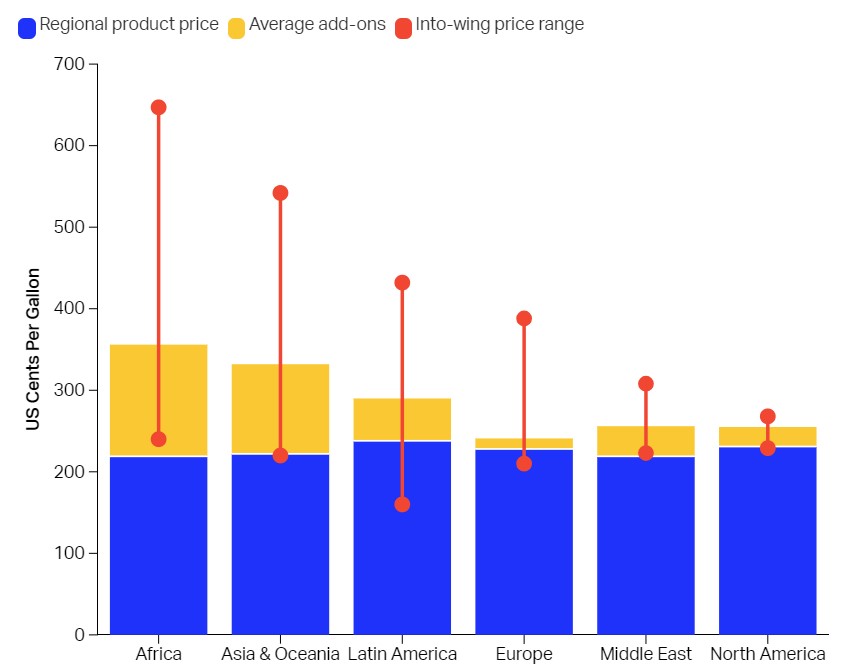Africa has the highest average into-wing fuel price globally. This fact alone is stifling Africa’s aviation sector simply because jet fuel typically constitutes the largest operational cost for an airline, currently at around 30% of total industry budgets.
There is no doubt that regions or airlines with higher fuel prices are disadvantaged in terms of their profitability and competitiveness. This is because regional fuel cost variation boils down to how well a country’s aviation sector can compete on the global stage.
There continues to be empirical evidence that when this jet-fuel reaches its final destination of being poured into the wing of the airplane, it costs more per litre in Africa than anywhere else on the planet.
According to a new International Air Transport Association (IATA) report, “Africa has the highest average into-wing fuel price globally, mainly due to limited supply competition, with governments or monopoly suppliers controlling the setting of into-wing prices at the airports in the region”.
IATA defines the into-wing price as the all-inclusive cost an airline pays for fuel delivery to its aircraft. This cost varies significantly across regions.
IATA notes that prices vary by region because of supply-demand dynamics at regional trading points.
“There are also sizeable regional variations in the add-on price, which comprises transport, storage and into-plane fuelling costs. This variability results from the lack of competition among suppliers, and complexities in regional logistics. Airports with reliable and developed supply chains and open access to their fuel infrastructure tend to have lower and more stable add-ons,” the IATA report states.
It further stipulates that logistics’ challenges and limited access to the fuel systems are also responsible for the high prices. Airports showing high into-wing prices in other regions generally face similar problems and challenges.
“With unequal access to mature fuel supply chains, certain airlines are already at a clear disadvantage with conventional fuel. From now on, it will be imperative to give SAF (sustainable aviation fuel) suppliers access to airport fuel systems since, as a drop-in fuel price, it uses the same infrastructure as conventional aviation fuel,” IATA states.
It added that regardless of their home base, all airlines should be able to participate on equal terms in the global SAF market, as they should in the global jet fuel market.


